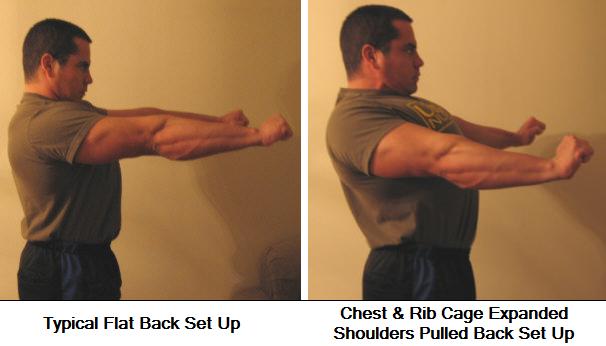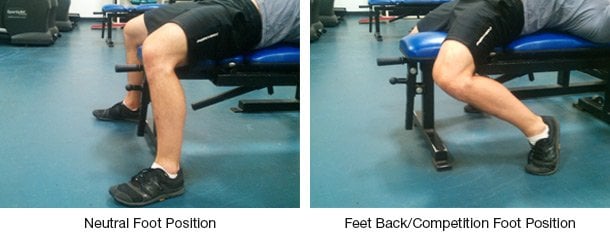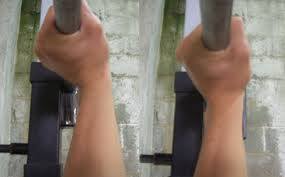If you’ve been lifting weights for any length of time, you’ve been asked:
“How much ya bench?”
The bench is so popular that Mondays are affectionately known as National Bench Press day. Walk into any gym on a Monday at 5 p.m. and I can guarantee that all of the bench press stations are occupied. While squats, and deadlifts are having a renaissance of sorts, when it comes down to it, the bench press is probably still the most popular lift.
But the truth is, most people have awful technique. Not only are they probably setting themselves up for injury but they’re also leaving a lot of weight off the bar. With just a few quick fixes to your technique, anyone can be protected from injuries and add pounds to their lift immediately.
1. Pack your shoulders and keep them tight.
Most people lay shoulders “flat” on the bench. What this means is that they allow there shoulders to be passive and spread out across the bench. This has several effects on your bench press:
- You don’t have a stable base to transfer force through the bench and press off of.
- You’re Humerus (upper arm bone) has a much better chance of sliding in the joint and creating damage to the shoulder joint.
What you want to do is pinch your shoulder blades together as tightly as possible and then pull them down “into the back pockets.” Now keep them there throughout the whole lift. This ensures that you’re creating as “open” a shoulder joint as possible and you’re giving yourself a stable platform to drive the bar off of.
2. Keep your feet in place and drive them into the ground.
How often do you see someone moving their feet around as they perform their set?
I see it often, in fact it’s very typical for beginners to have so little foot pressure that they end up kicking a foot out from under them.
What should happen is that the feet are in place the entire time and you’re actively driving them through the ground.
There is a lot of debate about if your whole foot should be on the ground or just your toes. I prefer placing my whole foot on the ground and driving through the heels, but many very strong bench pressers perform the lift on the balls of their feet. Either way, you should have tension through the legs the whole time. From lift-off until you re-rack the bar, really focus on pressing the feet through the floor, “squatting the weight up” as you drive the weight off the chest.
3. Squeeze your butt HARD.
One of the keys to lifting the most weight possible and increasing safety while lifting is tightness. You need to focus on creating tension through the whole body to brace against the force of the bar and transfer the most force possible through the bar. Without tightness, joints will move that shouldn’t and your chance for injury skyrockets.
This is why it’s so important to activate the glutes and keep them turned on the whole time. Once you’ve learned how to “squat the weight up” and drive with the legs, if you don’t keep the glutes turned on, there is a good chance you’ll over extend (arch) the lumbar spine as the pelvis shifts anteriorly. This will drive the hips off the bench, increase the chance of the pelvis shifting and can be very stressful to the lumbar vertebrae, especially at the L4, L5. and S1 vertebrae. Squeezing the glutes hard the whole time (especially off the chest) will help lock the pelvis and therefore spine and whole body in place and ensure a better, safer transfer of force into the bar.
4. Crush the bar.
Remember, lifting heavy weights is, in large part about creating tightness through the whole body. What happens when you really, I mean really, try to crush something? Your whole body should tighten up. At the very least your arms and upper torso.
Crushing the bar will not only help tighten everything up, crushing the bar also sends a signal to the brain that more force is needed to perform this task and the body will respond by recruiting more of the Type 2 muscle fibers. Those are the biggest, strongest type of muscle fibers, the ones that need to be activated to lift big weights.
Quick Tip: The bar should be in the heel of the hand, NOT the fingers.
Bar placement in the hand is very important. If the bar is in the fingers you’re going to bend your wrists. Place the bar towards the heel of the hand, keep the wrist straight, wrap the fingers around the bar and crush it.
5. Press yourself away from the bar; not the bar away from you.
What does that even mean?
You should think about pressing yourself, head, shoulders, and feet into the floor to create distance between you and the bar instead of pressing the bar form you. This will help you stay “tight” by keeping your upper back tight and legs engaged.
When we think about pressing the bar away there is a tendency to get “soft” in the upper back and legs. Not only does this reduce the amount of force you can transfer into the bar, ie. the amount of weight you can lift, it also increases your chance for injury. As the upper back loses tension and the scapula “unpack” and flatten out the shoulder joint becomes increasingly unstable. If the lower body isn’t engaged you’re not only losing a lot of your power but the chance of the pelvis shifting, and the back injury that could come with it, increases greatly. Get and stay tight.
Do these five things next time you head in to bench. At first most of them will feel a bit foreign, but after just a few sets you’ll be surprised at how much more “locked in” to the bench and bar you feel, and how much stronger you are.















































